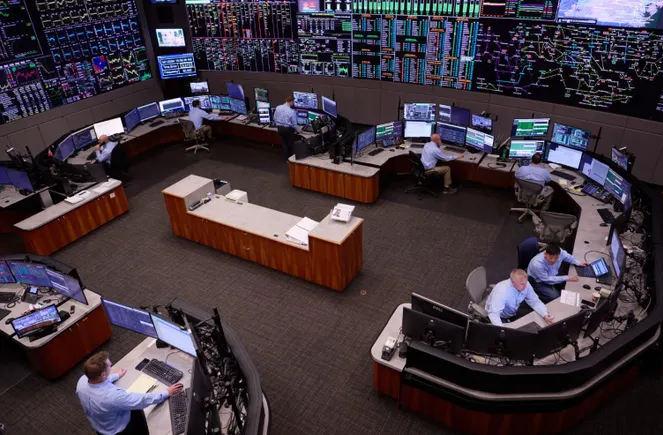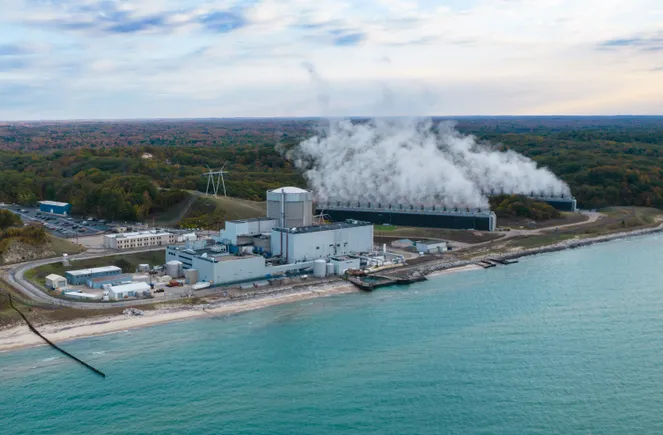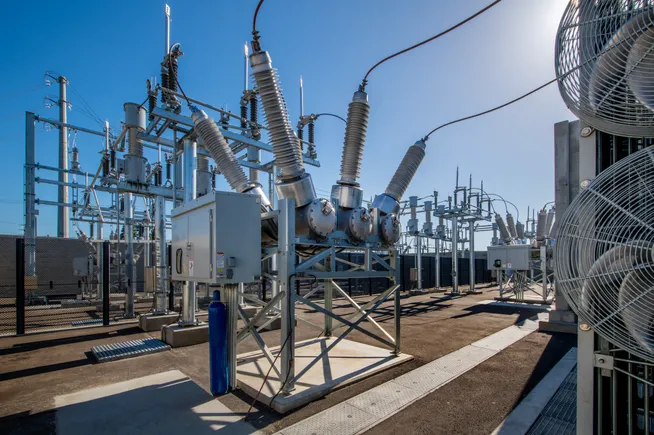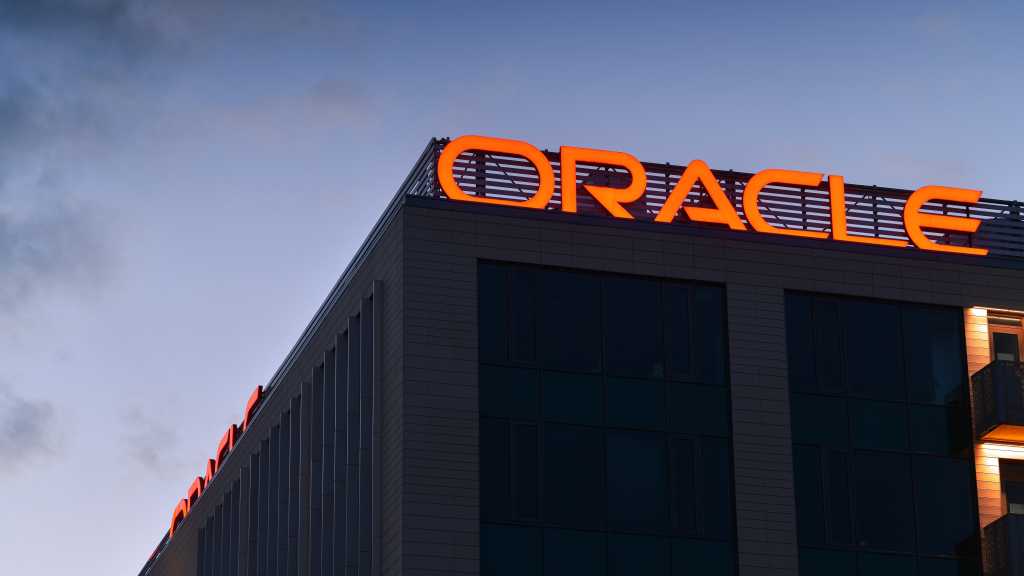
This is a linkpost for https://arxiv.org/abs/2505.17882

Stay ahead with more perspectives on cutting-edge power, infrastructure, energy, bitcoin and AI solutions. Explore these articles to uncover strategies and insights shaping the future of industries.

SUBSCRIBE TO OUR NEWSLETTER From our editors straight to your inbox Get started by entering your email address below. Please enter a valid email address Subscribe

BaaS supports private, public and hybrid cloud environments. Hybrid cloud, which pairs on-premises infrastructure with cloud-based storage and management, can help enterprises achieve what’s known as the “3-2-1 rule of backup,” a strategy whereby an enterprise keeps three copies of their data — two in local storage, one offsite. However,

This is a linkpost for https://arxiv.org/abs/2505.17882

Value private cloud’s financial visibility and predictability: 90% Report some level of waste on public cloud spend: 94% Believe more than 25% of their public cloud spend is wasted: 49% “Pretty much all of them believe that some of their spend, if not a majority of their spend, is wasted

Raging Western Canadian wildfires that have forced thousands of people from their homes are now also prompting evacuations from oilsands projects in northern Alberta. A fire near Cold Lake, Alberta is bearing down on oilsands operations and curtailing production in the region as employees are told to leave. Out-of-control fires in Alberta, Saskatchewan and Manitoba are threatening towns and mining operations as crews fight to contain the blazes. Canadian Natural Resources Ltd., the largest oil and gas producer in the country, said Saturday it had evacuated workers from its Jackfish 1 oilsands project and halted 36,500 barrels per day of bitumen production. “All workers are safe and accounted for with no reported injuries,” the Calgary-based company said in a statement. Similarly, MEG Energy Corp. said late Saturday it had “proactively” evacuated all non-essential personnel from its Christina Lake project and that the wildfire had caused an outage to a third-party power line, disconnecting it from the grid. The company said it is still producing oil from the project, though the startup of an additional 70,000 barrels per day of production will be delayed as a result of the power loss. “We are working closely with authorities and coordinating with our industry peers to support each other and resume normal operations,” MEG President and CEO Darlene Gates said in a statement. Earlier, Cenovus Energy Inc. put customers on notice that it may not make some oil deliveries from one asset and evacuated staff from another in the Cold Lake region. WHAT DO YOU THINK? Generated by readers, the comments included herein do not reflect the views and opinions of Rigzone. All comments are subject to editorial review. Off-topic, inappropriate or insulting comments will be removed.

Dive Brief: Declaring an emergency in parts of the PJM Interconnection’s footprint, the U.S. Department of Energy on Friday ordered Constellation Energy and PJM to continue operating 760 MW of oil- and gas-fired peaking capacity in Pennsylvania that Constellation had planned to deactivate the next day. The emergency order directs Constellation to keep operating two units at its Eddystone power plant near Philadelphia until Aug. 28. The order can be extended. PJM supports DOE’s order. “The department’s order is a prudent, term-limited step that will retain the covered generators for a 90-day period,” the grid operator said Saturday. “This will allow DOE, Constellation Energy and PJM to undertake further analysis regarding the longer-term need and viability of these generators.” Dive Insight: The Federal Power Act’s section 202(c) gives the DOE secretary the authority to temporarily order power plants to operate during wars and emergencies. It has been used 17 times since August 2020, according to DOE. DOE partly based its order on a May 9 report from PJM that said the grid operator had enough power supplies for this summer under normal conditions, but that under extreme conditions featuring record-setting demand it could have to call on demand response resources to avoid power outages. In determining that PJM faces an emergency, DOE also cited a PJM report from February 2023 indicating the grid operator faced tightening supply-demand conditions this decade. In addition, PJM in December asked FERC to approve a fast-track interconnection process for some planned power supplies to address potential reliability concerns, DOE said. FERC approved the plan in February. “The potential shortage of electric energy, shortage of facilities for the generation of electric energy, and other causes in the region support the need for the Eddystone Units to contribute to system reliability,” DOE said. DOE issued a similar

Dive Brief: Holtec International’s efforts to restart the 800-MW Palisades nuclear power plant pose “no significant impact” to the human environment, the Nuclear Regulatory Commission said on Friday. The official notice of NRC’s finding removes a potential roadblock to what is expected to be the first recommissioning of a retired nuclear reactor in the United States later this year. NRC issued a draft finding of no significant impact, or FONSI, for the western Michigan plant in January, prompting a challenge from local and national anti-nuclear groups. “Pending all federal reviews and approvals, our restart project is on track and on budget to bring Palisades back online by the fourth quarter of the year,” Nick Culp, Holtec’s senior manager of government affairs and communications, said in an email. Dive Insight: The FONSI is a “major milestone on our regulatory path to reauthorize plant operations,” Culp added. NRC continues to review other aspects of the Palisades restart process, including a request to approve Holtec’s method for repairing an onsite steam generator system that NRC said last year showed wear that “far exceeded estimates based on previous operating history.” The wear may have been caused by shutdown crews not following protocol while laying up the plant in 2022, Holtec spokesperson Pat O’Brien told Reuters in October. NRC’s review timeline has slipped since March, when the commission said it would rule on outstanding licensing matters by July 31. Its website now shows an estimated completion date of Sept. 30 for the steam generator review, the last item on its docket. But Holtec’s own estimates of when Palisades could power back up have not changed significantly from the October 2025 target O’Brien gave Utility Dive last September. Unlike many clean energy projects that received financial commitments from the Biden administration, the Palisades restart appears to

Dive Brief: The U.S. Nuclear Regulatory Commission has approved NuScale Power’s design for a 462-MW small modular reactor power plant, the U.S. nuclear regulator said on Thursday. NRC completed its technical review of NuScale’s US460 in less than two years, ahead of schedule and under budget, it said. The US460 is based on NuScale’s 12-module, 600-MW US600 design, which NRC approved in 2020 after more than three and a half years of review. The newly-approved design’s larger modules will help NuScale power plants more effectively serve hyperscale data center customers, CEO John Hopkins told investors in November. Data centers represent a key segment for the company as it looks to lock down its first U.S. customer this year. Dive Insight: The NRC approval came earlier than expected, according to estimated completion timelines provided by NRC and reiterated by Hopkins on several recent investor calls. NuScale had anticipated a final decision by July, Hopkins said on May 12. The approval could be crucial as NuScale moves through “advanced commercial dialogue with major technology and industrial companies, utilities and national and local governments,” Hopkins said in March. “Once we get finalization” for the 77-MWe design, “we’re off to the races,” Hopkins said. NuScale has not announced a binding customer deal. But in its first-quarter investor presentation, the company said it expected a “firm customer order” by the end of this year. NuScale manufacturing partner Doosan has 12 modules in production now at its South Korea foundry and could deliver up to 20 per year in the near term, Hopkins said on May 12. Its first power plant could be operational by the end of 2030 if it gets a finalized deal soon, he added. For now, NuScale is acting as the nuclear technology subcontractor to Fluor Corp. on a 462-MW power plant

Rahul Chaturvedi is the CEO of VIE Technologies. The United States’ electric grid is entering a period of unprecedented stress. Aging infrastructure, rising energy demand and global supply-chain constraints are converging to create a dangerous vulnerability: a critical shortage of functioning power transformers. These silent workhorses of the grid, numbering between 60 and 80 million nationwide, are increasingly at risk of failure. And when they do fail, replacing them can take years, not months. Lead times for new transformer deliveries now stretch from 80 to 210 weeks, according to an April 2024 report by Wood Mackenzie. This is a staggering increase in wait times, driven by raw material shortages, manufacturing bottlenecks and now tariffs. That means a single failed transformer today could leave entire communities in the dark for months. In the wake of natural disasters or targeted attacks, the consequences could be catastrophic. Transformer failure isn’t just a maintenance issue — it’s a security risk Transformers aren’t just aging — many are operating well beyond their intended lifespan. Over one-third of U.S. units are more than 40 years old, and many are serving load profiles they were never designed for. The rise of electric vehicles, grid-scale batteries, renewable generation and energy-hungry data centers is creating dynamic, high-stress operating conditions that strain these aging assets to the breaking point. Add to that the growing threat of sabotage and climate disasters: In December 2022, coordinated gunfire attacks on two substations in North Carolina left 45,000 people without power for days; In early 2025, a man was convicted for plotting attacks on Baltimore-area substations, a plan that could have caused massive regional disruption; and, In September 2024, Hurricane Helene damaged transformers at 360 substations across North Carolina, leading to over 4 million outages, some lasting weeks. These events underscore a stark reality:

U.S. liquefied natural gas (LNG) exporter Cheniere Energy Inc., through Cheniere Marketing LLC, has signed a long-term Integrated Production Marketing (IPM) gas supply agreement with Canadian Natural Resources Limited. Under the IPM agreement, a subsidiary of Canadian Natural has agreed to sell 140,000 MMBtu per day of natural gas to Cheniere Marketing for 15 years, which is expected to commence in 2030, Cheniere said in a media release. Canadian Natural is guarantor of the IPM agreement, Cheniere said. LNG associated with this gas supply, approximately 0.85 million tonnes per annum (MMtpa), will be marketed by Cheniere Marketing. Cheniere added that its unit will pay an LNG-linked price for the natural gas, based on the Platts Japan Korea Marker (JKM). The IPM agreement is subject to Cheniere making a positive Final Investment Decision on the Sabine Pass Liquefaction (SPL) Expansion Project. The SPL Expansion Project is being developed with an expected total production capacity of up to approximately 20 MMtpa, inclusive of estimated debottlenecking opportunities. Cheniere currently operates six liquefaction units, or trains, at the Sabine Pass LNG project, each capable of producing 5 MMtpa of LNG. In February 2024, Sabine Pass filed an application with the FERC for authorization to site, construct, and operate the Sabine Pass Stage 5 Expansion Project. The expansion would include two trains with a nameplate capacity of approximately 7 MMtpa and a maximum production capacity of approximately 8.43 MMtpa, a boil-off gas reliquefaction unit with a maximum capacity of approximately 0.90 MMtpa, and two full-containment, above-ground 220,000 cubic-meter (7.7 million cubic feet) LNG storage tanks with loading capabilities, Cheniere said. To contact the author, email [email protected] WHAT DO YOU THINK? Generated by readers, the comments included herein do not reflect the views and opinions of Rigzone. All comments are subject to editorial review. Off-topic, inappropriate

“Investor confidence in data centres is expected to strengthen over the remainder of the decade,” the report said. “Strong demand and solid underlying fundamentals fuelled by AI and cloud services growth will provide a robust foundation for investors to build scale.” Enterprise strategies must evolve With supply constrained and prices rising, CBRE recommended that enterprises rethink data center procurement models. Waiting for optimal sites or price points is no longer viable in many markets. Instead, enterprises should pursue early partnerships with operators that have robust development pipelines and focus on securing power-ready land. Build-to-suit models are becoming more relevant, especially for larger capacity requirements. Smaller enterprise facilities — those under 5MW — may face sustainability challenges in the long term. The report suggested that these could become “less relevant” as companies increasingly turn to specialized colocation and hyperscale providers. Still, traditional workloads will continue to represent up to 50% of total demand through 2030, preserving value in existing facilities for non-AI use cases, the report added. The region’s projected 15 to 25 GW gap is more than a temporary shortage — it signals a structural shift, CBRE said. Enterprises that act early to secure infrastructure, invest in emerging markets, and align with power availability will be best positioned to meet digital transformation goals. “Those that wait may find themselves locked out of the digital infrastructure they need to compete,” the report added.

The software can block domains associated with phishing, malware, botnets, and other high-risk categories such as cryptomining or new domains that haven’t been reported previously. It can also create custom block and allow lists and offers the ability to pinpoint compromised systems using real-time security activity reports, Brunetto wrote. According to Cisco, many organizations leave DNS resolution to their ISP. “But the growth of direct enterprise internet connections and remote work make DNS optimization for threat defense, privacy, compliance, and performance ever more important,” Cisco stated. “Along with core security hygiene, like a patching program, strong DNS-layer security is the leading cost-effective way to improve security posture. It blocks threats before they even reach your firewall, dramatically reducing the alert pressure your security team manages.” “Unlike other Secure Service Edge (SSE) solutions that have added basic DNS security in a ‘checkbox’ attempt to meet market demand, Cisco Secure Access – DNS Defense embeds strong security into its global network of 50+ DNS data centers,” Brunetto wrote. “Among all SSE solutions, only Cisco’s features a recursive DNS architecture that ensures low-latency, fast DNS resolution, and seamless failover.”

And in large-scale enterprise environments embracing collapsed-core designs, the switch acts as a high-performance aggregation layer. It consolidates services, simplifies network architecture, and enforces security policies natively, reducing complexity and operational cost, Gray said. In addition, the switch offers the agility and security required at colocation facilities and edge sites. Its integrated Layer 4 stateful security and automation-ready platform enable rapid deployment while maintaining robust control and visibility over distributed infrastructure, Gray said. The CX 10040 significantly expands the capacity it can provide and the roles it can serve for enterprise customers, according to one industry analyst. “From the enterprise side, this expands on the feature set and capabilities of the original 10000, giving customers the ability to run additional services directly in the network,” said Alan Weckel, co-founder and analyst with The 650 Group. “It helps drive a lower TCO and provide a more secure network.” Aimed as a VMware alternative Gray noted that HPE Aruba is combining its recently announced Morpheus VM Essentials plug-in package, which offers a hypervisor-based package aimed at hybrid cloud virtualization environments, with the CX 10040 to deliver a meaningful alternative to Broadcom’s VMware package. “If customers want to get out of the business of having to buy VM cloud or Cloud Foundation stuff and all of that, they can replace the distributed firewall, microsegmentation and lots of the capabilities found in the old VMware NSX [networking software] and the CX 10k, and Morpheus can easily replace that functionality [such as VM orchestration, automation and policy management],” Gray said. The 650 Group’s Weckel weighed in on the idea of the CX 10040 as a VMware alternative:

They use heat exchangers and pumps to regulate the flow and temperature of fluid delivered to equipment for cooling, while isolating the technology cooling system loop from facility systems. The technology addresses limitations of traditional air cooling, which industry experts say cannot adequately handle the heat generated by modern AI processors and high-density computing applications. Strategic significance for India Industry analysts view the development as a critical milestone for India’s data center ecosystem. “India generates 20% of global data, yet contributes only 3% to global data center capacity. This imbalance is not merely spatial — it’s systemic,” said Sanchit Vir Gogia, chief analyst and CEO at Greyhound Research. “The emergence of indigenously developed CDUs signals a strategic pivot. Domestic CDU innovation is a defining moment in India’s transition from data centre host to technology co-creator.” Neil Shah, VP for research and partner at Counterpoint Research, noted that major international players like Schneider, Vertiv, Asetek, Liquidstack, and Zutacore have been driving most CDU deployments in Indian enterprises and data centers. “Having a local indigenous CDU tech and supplier designed with Indian weather, infrastructure and costs in mind expands options for domestic data center demand,” he said. AI driving data center cooling revolution India’s data center capacity reached approximately 1,255 MW between January and September 2024 and was projected to expand to around 1,600 MW by the end of 2024, according to CBRE India’s 2024 Data Center Market Update. Multiple market research firms have projected the India data center market to grow from about $5.7 billion in 2024 to $12 billion by 2030. Bhavaraju cited aggressive projections for the sector’s expansion, with AI workloads expected to account for 30% of total workloads by 2030. “All of them need liquid cooling,” he said, noting that “today’s latest GPU servers – GB200 from Nvidia

Revisting the platform vs. point solutions debate The dilemma of whether to deploy an assortment of best-of-breed products from multiple vendors or go with a unified platform of “good enough” tools from a single vendor has vexed IT execs forever. Today, the pendulum is swinging toward the platform approach for three key reasons. First, complexity, driven by the increasingly distributed nature of enterprise networks, has emerged as a top challenge facing IT execs. Second, the lines between networking and security are blurring, particularly as organizations deploy zero trust network access (ZTNA). And third, to reap the benefits of AIOps, generative AI and agentic AI, organizations need a unified data store. “The era of enterprise connectivity platforms is upon us,” says IDC analyst Brandon Butler. “Organizations are increasingly adopting platform-based approaches to their enterprise connectivity infrastructure to overcome complexity and unlock new business value. When enhanced by AI, enterprise platforms can increase productivity, enrich end-user experiences, enhance security, and ultimately drive new opportunities for innovation.” In IDC’s Worldwide AI in Networking Special Report, 78% of survey respondents agreed or strongly agreed with the statement: “I am moving to an AI-powered platform approach for networking.” Gartner predicts that 70% of enterprises will select a broad platform for new multi-cloud networking software deployments by 2027, an increase from 10% in early 2024. The breakdown of silos between network and security operations will be driven by organizations implementing zero-trust principles as well as the adoption of AI and AIOps. “In the future, enterprise networks will be increasingly automated, AI-assisted and more tightly integrated with security across LAN, data center and WAN domains,” according to Gartner’s 2025 Strategic Roadmap for Enterprise Networking. While all of the major networking vendors have announced cloud-based platforms, it’s still relatively early days. For example, Cisco announced a general framework for Cisco

OpenAI has also expanded Stargate internationally, with plans for a UAE data center announced during Trump’s recent Gulf tour. The Abu Dhabi facility is planned as a 10-square-mile campus with 5 gigawatts of power. Gogia said OpenAI’s selection of Oracle “is not just about raw compute, but about access to geographically distributed, enterprise-grade infrastructure that complements its ambition to serve diverse regulatory environments and availability zones.” Power demands create infrastructure dilemma The facility’s power requirements raise serious questions about AI’s sustainability. Gogia noted that the 1.2-gigawatt demand — “on par with a nuclear facility” — highlights “the energy unsustainability of today’s hyperscale AI ambitions.” Shah warned that the power envelope keeps expanding. “As AI scales up and so does the necessary compute infrastructure needs exponentially, the power envelope is also consistently rising,” he said. “The key question is how much is enough? Today it’s 1.2GW, tomorrow it would need even more.” This escalating demand could burden Texas’s infrastructure, potentially requiring billions in new power grid investments that “will eventually put burden on the tax-paying residents,” Shah noted. Alternatively, projects like Stargate may need to “build their own separate scalable power plant.” What this means for enterprises The scale of these facilities explains why many organizations are shifting toward leased AI computing rather than building their own capabilities. The capital requirements and operational complexity are beyond what most enterprises can handle independently.

And Microsoft isn’t the only one that is ramping up its investments into AI-enabled data centers. Rival cloud service providers are all investing in either upgrading or opening new data centers to capture a larger chunk of business from developers and users of large language models (LLMs). In a report published in October 2024, Bloomberg Intelligence estimated that demand for generative AI would push Microsoft, AWS, Google, Oracle, Meta, and Apple would between them devote $200 billion to capex in 2025, up from $110 billion in 2023. Microsoft is one of the biggest spenders, followed closely by Google and AWS, Bloomberg Intelligence said. Its estimate of Microsoft’s capital spending on AI, at $62.4 billion for calendar 2025, is lower than Smith’s claim that the company will invest $80 billion in the fiscal year to June 30, 2025. Both figures, though, are way higher than Microsoft’s 2020 capital expenditure of “just” $17.6 billion. The majority of the increased spending is tied to cloud services and the expansion of AI infrastructure needed to provide compute capacity for OpenAI workloads. Separately, last October Amazon CEO Andy Jassy said his company planned total capex spend of $75 billion in 2024 and even more in 2025, with much of it going to AWS, its cloud computing division.

Join our daily and weekly newsletters for the latest updates and exclusive content on industry-leading AI coverage. Learn More Self-driving tractors might be the path to self-driving cars. John Deere has revealed a new line of autonomous machines and tech across agriculture, construction and commercial landscaping. The Moline, Illinois-based John Deere has been in business for 187 years, yet it’s been a regular as a non-tech company showing off technology at the big tech trade show in Las Vegas and is back at CES 2025 with more autonomous tractors and other vehicles. This is not something we usually cover, but John Deere has a lot of data that is interesting in the big picture of tech. The message from the company is that there aren’t enough skilled farm laborers to do the work that its customers need. It’s been a challenge for most of the last two decades, said Jahmy Hindman, CTO at John Deere, in a briefing. Much of the tech will come this fall and after that. He noted that the average farmer in the U.S. is over 58 and works 12 to 18 hours a day to grow food for us. And he said the American Farm Bureau Federation estimates there are roughly 2.4 million farm jobs that need to be filled annually; and the agricultural work force continues to shrink. (This is my hint to the anti-immigration crowd). John Deere’s autonomous 9RX Tractor. Farmers can oversee it using an app. While each of these industries experiences their own set of challenges, a commonality across all is skilled labor availability. In construction, about 80% percent of contractors struggle to find skilled labor. And in commercial landscaping, 86% of landscaping business owners can’t find labor to fill open positions, he said. “They have to figure out how to do

Join our daily and weekly newsletters for the latest updates and exclusive content on industry-leading AI coverage. Learn More 2025 is poised to be a pivotal year for enterprise AI. The past year has seen rapid innovation, and this year will see the same. This has made it more critical than ever to revisit your AI strategy to stay competitive and create value for your customers. From scaling AI agents to optimizing costs, here are the five critical areas enterprises should prioritize for their AI strategy this year. 1. Agents: the next generation of automation AI agents are no longer theoretical. In 2025, they’re indispensable tools for enterprises looking to streamline operations and enhance customer interactions. Unlike traditional software, agents powered by large language models (LLMs) can make nuanced decisions, navigate complex multi-step tasks, and integrate seamlessly with tools and APIs. At the start of 2024, agents were not ready for prime time, making frustrating mistakes like hallucinating URLs. They started getting better as frontier large language models themselves improved. “Let me put it this way,” said Sam Witteveen, cofounder of Red Dragon, a company that develops agents for companies, and that recently reviewed the 48 agents it built last year. “Interestingly, the ones that we built at the start of the year, a lot of those worked way better at the end of the year just because the models got better.” Witteveen shared this in the video podcast we filmed to discuss these five big trends in detail. Models are getting better and hallucinating less, and they’re also being trained to do agentic tasks. Another feature that the model providers are researching is a way to use the LLM as a judge, and as models get cheaper (something we’ll cover below), companies can use three or more models to

Join our daily and weekly newsletters for the latest updates and exclusive content on industry-leading AI coverage. Learn More OpenAI has taken a more aggressive approach to red teaming than its AI competitors, demonstrating its security teams’ advanced capabilities in two areas: multi-step reinforcement and external red teaming. OpenAI recently released two papers that set a new competitive standard for improving the quality, reliability and safety of AI models in these two techniques and more. The first paper, “OpenAI’s Approach to External Red Teaming for AI Models and Systems,” reports that specialized teams outside the company have proven effective in uncovering vulnerabilities that might otherwise have made it into a released model because in-house testing techniques may have missed them. In the second paper, “Diverse and Effective Red Teaming with Auto-Generated Rewards and Multi-Step Reinforcement Learning,” OpenAI introduces an automated framework that relies on iterative reinforcement learning to generate a broad spectrum of novel, wide-ranging attacks. Going all-in on red teaming pays practical, competitive dividends It’s encouraging to see competitive intensity in red teaming growing among AI companies. When Anthropic released its AI red team guidelines in June of last year, it joined AI providers including Google, Microsoft, Nvidia, OpenAI, and even the U.S.’s National Institute of Standards and Technology (NIST), which all had released red teaming frameworks. Investing heavily in red teaming yields tangible benefits for security leaders in any organization. OpenAI’s paper on external red teaming provides a detailed analysis of how the company strives to create specialized external teams that include cybersecurity and subject matter experts. The goal is to see if knowledgeable external teams can defeat models’ security perimeters and find gaps in their security, biases and controls that prompt-based testing couldn’t find. What makes OpenAI’s recent papers noteworthy is how well they define using human-in-the-middle

Join our daily and weekly newsletters for the latest updates and exclusive content on industry-leading AI coverage. Learn More OpenAI’s Sora was one of the

This is today’s edition of The Download, our weekday newsletter that provides a daily dose of what’s going on in the world of technology. The

Aethir provides better computing efficiency with its Instant Play streaming solution for Doctor Who: Worlds Apart, resulting in better user-acquisition efficiency and revenue.
‘In a

The Trump administration has terminated National Science Foundation grants for more than 100 research projects related to climate change amid a widening campaign to slash